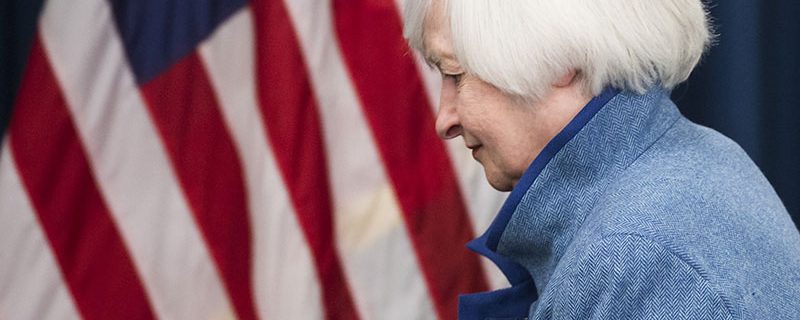Following a unanimous decision by the Federal Open Market Committee on December 14, the Federal Reserve announced an increase of 0.25 percent in the US federal funds' interest rate – rising to 0.75 percent. The rate increase was broadly anticipated by commentators and reflects positive momentum in the US economy – with rising inflation and an improving job market. Janet Yellen, Chair of the Federal Reserve, said the increase was in recognition of “the considerable progress the economy has made toward [the federal reserve's] dual objectives of maximum employment and price stability”. Yellen added that it marked a “vote of confidence” in the economy.
The Fed also signalled hikes in 2017 would be more frequent than previously projected. While only two rate rises of 0.25 percent had originally been touted, the Fed announced they now expected three. Projections for the economy were also adjusted – upward from those in September – with a slight rise in the GDP forecast accompanying lower rates of unemployment. When questioned on the change in projected interest rate decisions, Yellen downplayed the shifts: “I want to emphasise that the shifts that you see here are really very tiny.”
The US job market appears to be in better shape than ever, with unemployment reaching… the lowest rate since before the global financial crisis
Some are speculating that this could mark the end of the low-rate era. Nigel Green, Founder and Chief Executive of deVere Group, said: “It is significant because it gives further weight to the considered argument that the era of very low inflation and interest rates may be ending.
“And despite the Fed appearing to want to proceed cautiously, and not threaten a constant rise in rates during 2017, many investors believe there are more hikes to come due to the strength of the U.S. economy and the likely policies of a Trump presidency.”
Yellen, however, hinted future rate increases were unlikely to pick up further pace: “We continue to expect that the evolution of the economy will warrant only gradual increases in the federal funds rate over time to achieve and maintain our objectives.”
The Fed's statement presented a growth forecast of 2.1 percent for 2017, 2 percent for 2018 and 1.9 percent for 2019. Inflation is on an upward trend and is expected to reach the Fed's target rate of two percent within the next two years. The 12-month change in the price index for personal consumption expenditures was almost 1.5 percent in October – up more than a percentage point from a year earlier.
Expectations of future inflation are based on the belief that the job market will strengthen further, as well as an expected wane in the effect of lower energy and import prices. The US job market appears to be in better shape than ever, with the unemployment rate reaching 4.6 percent in November – the lowest rate since before the global financial crisis.
The market response was fairly muted due to the fact rate increases were broadly expected. However, the announcement saw a five-year high in yields on shorter-dated treasuries. The dollar also rose to its highest level against the yen in 10 months, with the dollar index jumping by 0.8 percent. Furthermore, oil prices dipped, reflecting the dollar's gain.



